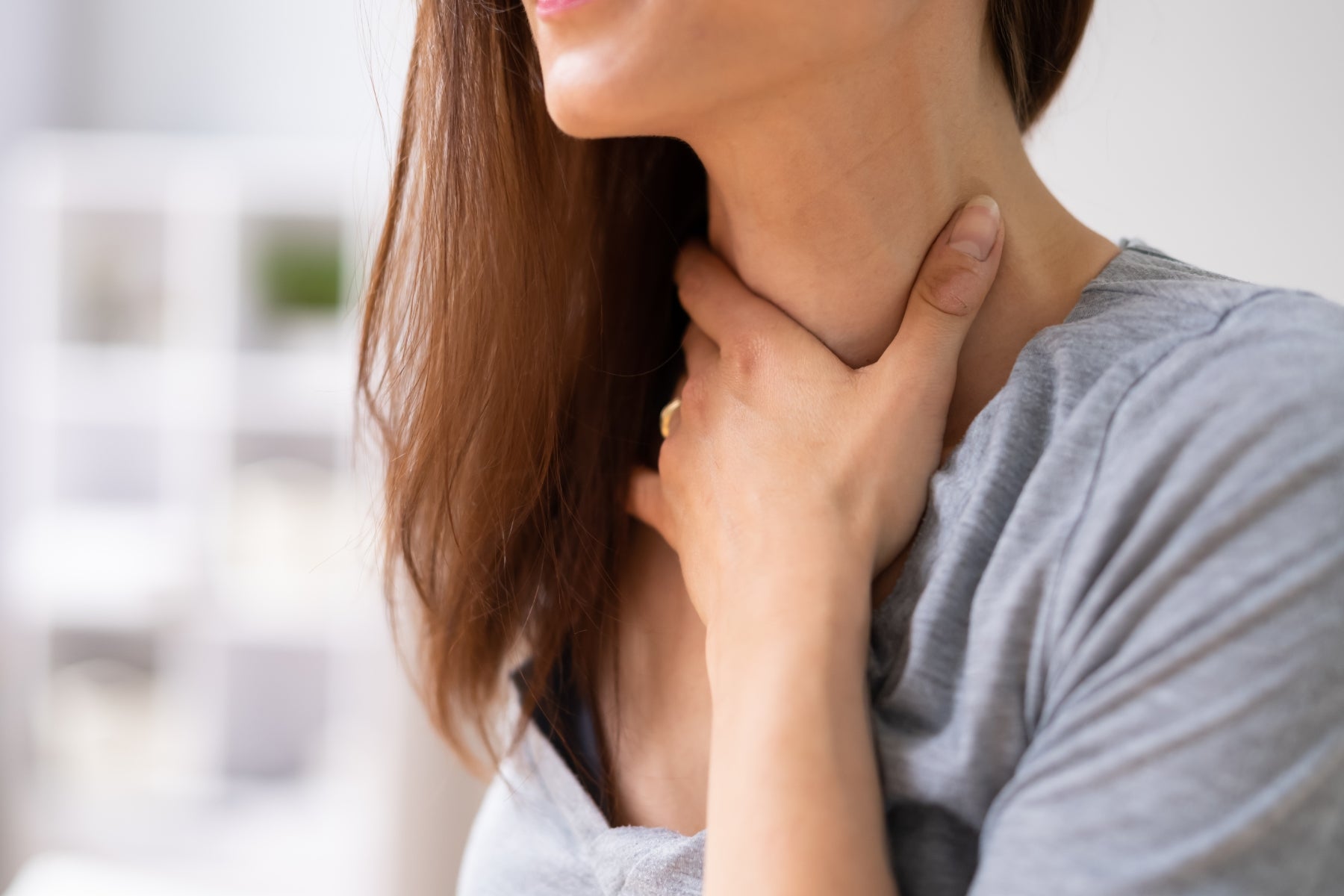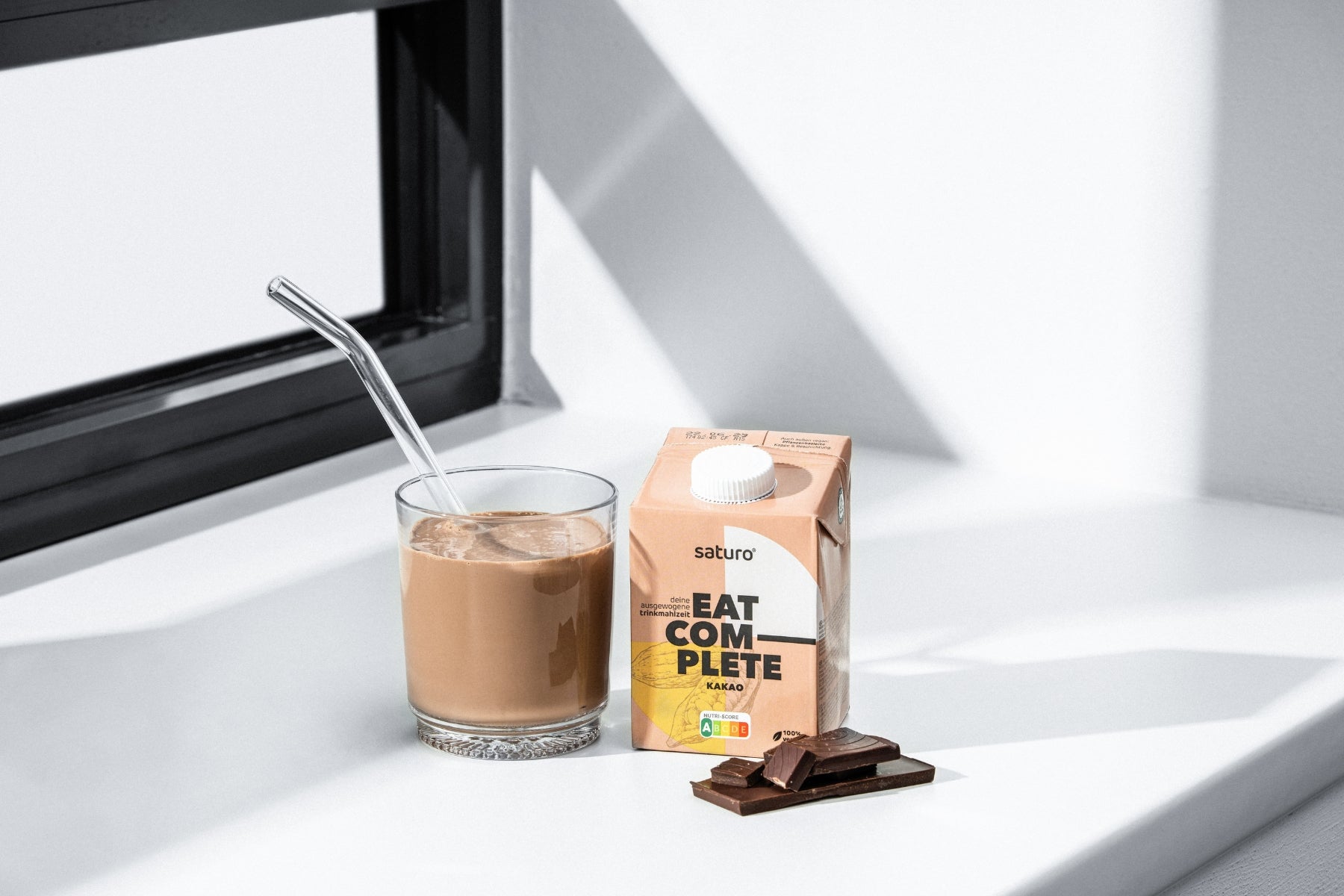
Holding: Příčiny a co pomáhá!
Pokud se často probudíte s pálením žáhy, nejste sami! Příčiny pálení žáhy jsou stejně rozmanité jako potenciální opatření, která můžete přijmout k boji proti pálení žáhy. Ukazujeme vám, co způsobuje pálení žáhy a jak můžete aktivně zabránit pálení žáhy.
Pálení žáhy - co pomáhá?
Tam, kde jícl teče do žaludku, je zde sval tvarovaný na prsten, který se označuje jako dolní svaly jícnu. Tento sval působí jako ventil a má za cíl zabránit kyselině žaludku tekoucí do jícnu. Zdravý světla by se měla otevřít pouze tehdy, pokud z. B. vlaštovky nebo pásy. Pokud trpíte pálením žáhy, jsou ovlivněny funkce tohoto svalu. Pokud z. B. Vypijte hodně minerální vody, vytvářejte tlak v žaludku tak, aby se kyselina protlačila přes otvor. Existuje mnoho potravin a každodenních návyků, které mohou vést k pálení žáhy. Naštěstí existuje také mnoho opatření, která můžete přijmout k boji a zabránění pálení žáhy. S těmito tipy můžete ukončit pálení žáhy!
Věnujte pozornost tomu, kolik jíte
Volba jídla hraje důležitou roli, ale základní pravidlo je: Vyvarujte se rychle se snižovat velká jídla, ale při jídle si udělejte čas. U většiny lidí je pálení žáhy patrné po konzumaci skvělých jídel 1 A také mohou zhoršit pálení žáhy.2
Věnujte pozornost, když jíte
Lidé, kteří trpí pálením žáhy, by neměli jíst nic tři hodiny, než usne. Jídlo krátce před spaním vede k silnějším stížnostem refluxu.3
Věnujte pozornost tomu, co jíte
Pokud trpíte pálením žáhy, existují určitá jídla, kterým byste se určitě měli vyhnout. To zahrnuje hlavně kyselá potraviny nebo potraviny, které obsahují aktivní složky, které stimulují produkci kyseliny žaludeční. Patří sem:
- Pyarmované nápoje (Minerální voda, cola, limonády atd.) 4
- Kyselé šťávy (např. Oranžová, ananasová nebo grapefruitová šťáva)
- Kyselé jídlo (Rajčata, ananas a všechny citrusové plody)
- Nadměrná konzumace potravin s velmi vysokým obsahem tuku a především smažená jídla
- kofein: Pokud se ještě nechcete bez své kávy ráno obejít, můžete přejít na espresso. Je pečená déle, která vytváří méně kyseliny kávy a místo toho obsahuje více hořkých látek. Nicméně kofein v něm obsahoval uvolňuje svěrač.
- Čokoláda: Kakao často vede k serotoninovým ostrohám (tj. Pocity štěstí). Toto zvýšení může vést k svědce vašeho jícnu. Kromě toho může kakao obsahovat kofein.5
Navzdory rostoucímu povědomí o výživě a zlepšení bezpečnosti potravin v rozvojových zemích je podvýživa všudypřítomným tématem veřejného zdraví. Zatímco kalorické deficity a hladomory jsou nyní ve většině zemí historií, v některých zemích roste nedostatek jednotlivých živin v důsledku stravy s jednou stranou.1
Integrace pití během pálení žáhy
Pro lidi, kteří jsou náchylní k pálení žáhy Doba pití jemná alternativa k pevným potravinám Představují, že může vyvolat pálení žáhy. Kapalné jídlo, které je speciálně navrženo pro jemné trávení, často obsahuje ingredience, které jsou méně kyseliny -a příliš nezatěžují žaludek. Poskytováním snadno stravitelných přísad, které jsou bohaté na živiny, podporují zdravou stravu, aniž by obsahovaly typické spouštěče pálení žáhy, jako jsou mastné, kyselé nebo obtížné strávit jídlo.
Kromě toho forma kapaliny umožňuje rychlejší trávení, které může snížit tlak v žaludku a tak snížit pravděpodobnost pálení žáhy. Od tebe Integrujte astronautské jídlo do vaší stravy, můžete svému tělu dodat potřebné živiny a zároveň minimalizovat riziko pálení žáhy.
Více tipů pro výživu proti pálení žáhy
- Voda a čaj proti pálení žáhy: Jako žízní zhášeč byste měli používat pouze voda nebo neslazené čaje.
- Mírné typy ovoce, které obsahují malou kyselinu, například Obzvláště se doporučuje B. Banány, manga, avokádo, broskve nebo hrozny.
- Můžete bezpečně konzumovat všechny byliny, kromě typů máty. Pomáhají také řádně okořenit váš omezený výběr jídel, aniž by se zhoršili pálení žáhy.
Vyvarujte se alkoholu, dokud neskončí pálení žáhy
Spotřeba alkoholu zvyšuje intenzitu refluxu a pálení žáhy. I mírná konzumace alkoholu může způsobit pálení žáhy. Proto byste se měli vyhnout alkoholu a zejména bez alkoholických nápojů, jako je šumivé víno nebo pivo.7
Žvýkací žvýkačka
Žvýkačka je částečně účinný domácí lék na pálení žáhy. I když nemůže zabránit tomu, aby žaludeční kyselina proudila do jícnu, může vaše příznaky zmírnit snížením kyselosti v jícnu. Podporuje také produkci slin, což je zvláště užitečné pro pálení žáhy. Tip zasvěcených: koupit žvýkačku, která obsahuje hydrogenuhličitan. Bicarbonate je velmi základní, a proto může kompenzovat pH vašeho těla.8
Věnujte pozornost tomu, jak spíte
Zvedněte konec hlavy postele
Mnoho lidí je postiženo pálením žáhy během noci. To ovlivňuje kvalitu spánku a ztěžuje usnutí. V tomto případě přemýšlejte o získání vyššího polštáře nebo zakřivení roštru vaší postele.9
Pokud jste boční pražce, spíte na levé straně
Bylo prokázáno, že spánek vpravo může zhoršit noční kyselý acidflux. Váš jícen teče na pravou stranu žaludku. Takže pokud jste na pravé straně, zrcadlo žaludeční kyseliny zakrývá spodní svěrač jícnu. To zvyšuje riziko acidfluxu při spánku.
Tipy, jak zabránit pálení žáhy
Výše uvedená opatření se vztahují také na prevenci pálení žáhy. Přestože je pro vás snadné přizpůsobit čas jídla a spící návyky, pravděpodobně se po zbytek života nechcete dělat bez rajčat nebo citrusových plodů. Pokud vás již několikrát zasáhl pálení žáhy, může být proto zvláště užitečné, abyste věnovali pozornost tomu, které jídlo jste jedli a jak se vám cítilo. Můžete tedy identifikovat určité spouštěče, které se liší od člověka k člověku. Pokud máte velmi nadváhu, úbytek hmotnosti pomáhá snižovat tlak v žaludku a tím i zátěž na dolním svěrači jícnu.

Příčiny pálení žáhy
Pálení žáhy je hlavním příznakem GERD (Gastroesofageální refluxní choroba) a je způsoben zpětným tokem kyseliny žaludeční do jícnu. Všechny rizikové faktory a příčiny pálení žáhy zvyšují buď produkci kyseliny žaludku a/nebo způsobují strukturální změny (relaxace nižšího svěrače jícnu), které způsobují snadnější protékání kyseliny žaludku do jícnu.
Kromě výše uvedeného jídla existují také různé léky na over -the -counter, které mohou vyvolat pálení žáhy. To zahrnuje hlavně ibuprofen, aspirin a naproxen. Následující podmínky a návyky jsou také prokázané rizikové faktory pro pálení žáhy:
- Kouření může ovlivnit funkci nižšího svěrače jícnu, což znamená, že kyselina může proudit zpět do jícnu.10
- Těhotenství může vést ke zvýšenému tlaku v břiše a narušit funkci svěrače.
- Stejně tak může obezita (obezita) vést ke zvýšenému tlaku v břišní oblasti, a tak způsobit pálení žáhy.
- Kromě GERD je pálení žáhy také příznakem pro další primární onemocnění jícnu, jako je sakoidóza a skleroderma.
- Hiatus kýla, ve které je část břicha v hrudi místo v břiše, může narušit fungování dolního svěrače jícnu a je rizikovým faktorem pro kyselý a tak hoří. Samotná hiatální kýla nezpůsobuje příznaky. Pouze když je Sphintter selhán, vzniká pálení žáhy.11
Jak se pálení žáhy vyjadřuje?
Bolest způsobená pálením žáhy je obvykle vnímána jako hořící pocit za Sternem. Bolest pálení žáhy může být často zaměňována s bolestí infarktu.
Bolest může zůstat ve spodní hrudi nebo vyzařovat v zadní části krku a způsobit tam kyselou chuť. Pokud je v krku poblíž hrtanu acidflux, může dokonce způsobit kašel nebo chraplavost. Chronický neošetřený reflux delšího času může být tak silný, že kyselina útočí na smalt na zubech a způsobuje kaz.
I když vás bolest neobtěžuje, nikdy byste neměli ignorovat pálení žáhy:
Pokud je pálení žáhy ignorováno, opakující se podráždění a zánět jícnu může vést k vředům. To může způsobit těžké krvácení. Reflux může také poškodit buňky jícnu. To může vést k nemoci zvané Barrett-Esophagus. Barrett Esophagus je silně spojen se zvýšeným rizikem rakoviny jícnu.12
FAQ - Často kladené otázky týkající se pálení žáhy
Co pomáhá s pálením žáhy?
Změna ve vašem spánku a stravovacích návycích je v boji proti pálení a ukončení. Pomáhá také hubnutí, vyhýbání se alkoholu nebo kouření.
Co jíst s pálením žáhy?
Zvláště se doporučuje s nízkým obsahem potravy, mírné odrůdy ovoce, byliny a obecně základní (tj. Ne kyselá jídla).
Jak se cítí pálení žáhy?
Pálení žáhy se obvykle cítí jako pocit pálení uprostřed hrudi, za hrudní kůží. Tento pocit může trvat několik hodin a vyzařovat do krku. Srdeční pálení se obvykle vyskytuje ráno po probuzení.
Odkud pochází pálení žáhy?
Pálení žáhy je způsobeno žaludeční kyselinou, která teče do jícnu, a tak tam stimuluje tkáň.
Možná vás to také zajímá
Sbalitelný obsah
Zdroje
- Dent, J., Brun, J., Fendrick, A., Fennerty, M., Janssens, J., Kahrilas, P., Lauritsen, K., Reynolds, J., Shaw, M., & Talley, N. (1999). K hodnocení založené na důkazech o řízení refluxní choroby-zpráva Genval Workshop. Good, 44 Suppl 2 (Suppl 2), S1 - S16.
- Castell, D.O., Murray, J.A., Tutuian, R., Orlando, R. C., & Arnold, R. (2004). Recenze Článek: Patofyziologie gastro -ozofageálního refluxního onemocnění - manifestace jícnu. Alimental Pharmacology & Therapeutics, 20 Suppl 9, 14–25.
- Fujiwara, Y., Machida, A., Watanabe, Y., Shiba, M., Tominaga, K., Watanabe, T., Oshitani, N., Higuchi, K. a Arakawa, T. (2005). Asociace mezi časem na večeři a gastroezofageální refluxní chorobou. The American Journal of Gastroenterology, 100 (12), 2633-2636.
- Johnson, T., Gerson, L., Hershcovici, T., Stave, C., & Fass, R. (2010). Systematický přehled: Účinky sycených nápojů na gastroezofageální refluxní onemocnění. Alimental Pharmacology & Therapeutics, 31 (6), 607–614.
- Murphy, D. W., & Castell, D.O. Čokoláda a pálení žáhy: Důkaz zvýšené expozice kyseliny jícnu po požití čokolády. The American Journal of Gastroenterology, 83 (6), 633–636.
- Holzer P. (2007). Tlačítko receptory v gastrointestinálním traktu. V. Snížení kyselin v gastrointestinálním traktu. American Journal of Physiology. Gastrointestinální a jaterní fyziologie, 292 (3), G699 - G705.
- Chen, S. H., Wang, J.W., & Li, Y. M. (2010). Je spotřeba alkoholu spojena s onemocněním gastroezofageálního refluxu?. Journal of Zhejiang University. Věda. B, 11 (6), 423–428.
- Sakamoto, Y., Kato, S., Sekino, Y., Sakai, E., Uchiyama, T., Iida, H., Hosono, K., Endo, H., Fujita, K., Koid, T. Takahashi , H., Yoneda, M., Tokoro, C., Goto, A., Abe, Y., Kobayashi, N., Kubota, K., Maeda, S., Nakajima, A., & Inamori, M. ( 2011). Změna vyprazdňování žaludku žvýkací gumou: hodnocení pomocí kontinuálního testu dechového testu v reálném čase (dechový systém). Journal of Neurogastroenterology and Motility, 17 (2), 174–179.
- Khan, B.A., Sodhi, J. S., Zargar, S.A., Javid, G., Yattoo, G., Shah, A., Gulzar, G. M., & Khan, M.A. (2012). Účinek zvýšení hlavy postele během spánku u symptomatických pacientů nočního gastroezofageálního refluxu. Journal of Gastroenterology and Hepatology, 27 (6), 1078-1082.
- Pandolfino, J.E. a Kahrilas, P. J. (2000). Kouření a gastroezofageální refluxní onemocnění. European Journal of Gastroenterology & Hepatology, 12 (8), 837–842.
- Pandolfino J. E. (2007). Hiatální kýla a léčba poruch souvisejících s kyselinou. Gastroenterology & Hepatology, 3 (2), 92–94.
- Reid, B. J., Li, X., Galipeau, P. C., & Vaughan, T. L. (2010). Barrettův jícen a adesokarcinom jícnu: čas pro novou syntézu. Recenze přírody. Rakovina, 10 (2), 87-101.


